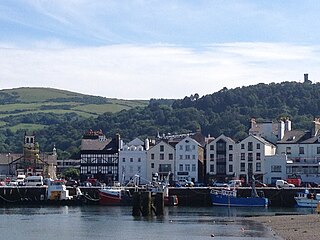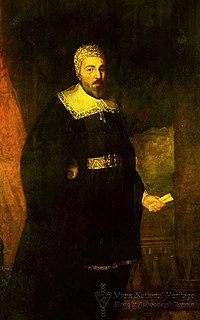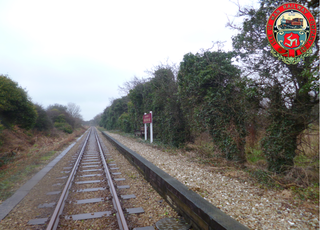Related Research Articles

The Isle of Man had become separated from Great Britain and Ireland by 6500 BC. It appears that colonisation took place by sea sometime during the Mesolithic era. The island has been visited by various raiders and trading peoples over the years. After being settled by people from Ireland in the first millennium AD, the Isle of Man was converted to Christianity and then suffered raids by Vikings from Norway. After becoming subject to Norwegian suzerainty as part of the Kingdom of Mann and the Isles, the Isle of Man later became a possession of the Scottish and then the English crowns.

The Isle of Man TT or Tourist Trophy races are an annual motorcycle racing event run on the Isle of Man in May/June of most years since its inaugural race in 1907. The event is often called one of the most dangerous racing events in the world.

Douglas is the capital and largest town of the Isle of Man, with a population of 27,938 (2011). It is located at the mouth of the River Douglas, and on a sweeping bay of two miles. The River Douglas forms part of the town's harbour and main commercial port.

Castletown is a town in the Isle of Man, geographically within the historical parish of Malew but administered separately. Lying at the south of the island, it was the Manx capital until 1869. The centre of town is dominated by Castle Rushen, a well-preserved medieval castle, originally built for a Viking king.

Ramsey is a coastal town in the north of the Isle of Man. It is the second largest town on the island after Douglas. Its population is 7,845 according to the 2016 Census. It has one of the biggest harbours on the island, and has a prominent derelict pier, called the Queen's Pier. It was formerly one of the main points of communication with Scotland. Ramsey has also been a route for several invasions by the Vikings and Scots.
Gerhard Bersu was a German archaeologist who excavated widely across Europe. He was forced into exile from Germany in 1937 due to anti-Semitic laws in pre-war Nazi Germany. He was interned on the Isle of Man during World War II where he made several significant archaeological discoveries such as the Viking boat burial at Balladoole.

Illiam Dhone or Illiam Dhôan, also known as William Christian, was a Manx politician and depending on viewpoint, patriot, rebel or traitor. He was a son of Ewan Christian, a deemster. In Manx, Illiam Dhone literally translates to Brown William—an epithet he received due to his dark hair, and in English he was called Brown-haired William. Dhone was a significant figure on the Isle of Man during the English Civil War and the Manx Rebellion of 1651. He was executed for high treason in 1663. In the centuries after his death he has become a "martyr and folk-hero, a symbol of the Island's cherished freedoms and traditional rights".

Isle of Man Airport is the main civilian airport on the Isle of Man. It is located in the south of the island at Ronaldsway near Castletown, 6 nautical miles southwest of Douglas, the island's capital. Along with the Isle of Man Sea Terminal, it is one of the two main gateways to the island. The airport has scheduled services to the United Kingdom and the Republic of Ireland.

Derbyhaven is a hamlet near Castletown in the southern parish of Malew, Isle of Man. It is located on the isthmus connecting Langness Peninsula to the rest of the island, on the bay of the same name, and also on Castletown Bay on the other side of the isthmus.

Ronaldsway Halt is a request stop on the Isle of Man Railway between Castletown and Ballasalla at Ronaldsway, near the Isle of Man Airport. Passengers wishing to board the train here can signal the driver to stop the train; to alight from the train the guard must be notified in advance.
Manx Airlines was an English-owned, Isle of Man-based airline that existed between 1982 and 2002. Its head office was located on the grounds of Isle of Man Airport in Ballasalla, Malew. An airline of the same name existed between 1947 and 1958.

Royal Air Force Andreas or more simply RAF Andreas is a former Royal Air Force station in the Isle of Man which was operational between 1941 and 1946. It was built in fields between Andreas and Bride in the north of the island. As was common practice, the station was named after the parish in which it was situated.

Hall Caine Airport, also known as Jurby Airfield, was an airfield on the Isle of Man near Ramsey. It was named after the author Sir Thomas Henry Hall Caine CH, KBE by his sons Gordon Hall Caine and Derwent Hall Caine, who began the project, and was the first airport in the British Isles to be named after a person. From 1935 to 1937 it handled domestic scheduled passenger flights to English, Scottish and Irish airports. By 1937 it had fallen into disuse, primarily due to its location.

The Winter Hill air disaster occurred on 27 February 1958, when the Silver City Airways Bristol 170 Freighter G-AICS, operated by Manx Airlines on a charter flight from the Isle of Man to Manchester, England, crashed during heavy snow into Winter Hill, 5 miles (8.0 km) southeast of Chorley. Thirty-five people died and seven were injured; the cause was determined to be navigational errors.

Isle of Man Air Services Ltd (IoMAS) was a small airline, based at Ronaldsway Airport Isle of Man, which operated scheduled flights to the English and Scottish mainland between formation in September 1937 and nationalisation in January 1947.

The de Havilland T.K.2 was a British 1930s single-engined monoplane, designed by students of the de Havilland Aeronautical Technical School. It won two races before World War II, and afterwards set a class closed circuit speed record.
The Ronaldsway Culture was the way of life of a Stone Age people on the Isle of Man. Sometimes referred to as Manx Ronaldsway, it dates from the later Neolithic and from the third millennium BC, but more precise dating is a matter of debate.

Stephen Paul Quine, is a Manx-born commercial pilot and former politician who, on August 31, 2002, was pilot in command of the final Manx Airlines flight. On 27 August 2020 he was elected as a Member of the House of Keys for the constituency of Douglas South in a by-election,before naorrowly losing his seat at the subsequent General Election.
Ewan Christian was a Manx politician and landowner on the Isle of Man. He held the position of deemster for 51 years from 1605 until his death. He also held the position of Deputy-Governor of the Isle of Man 1634 to 1637. He was the father of controversial Manx political revolutionary and folk-hero Illiam Dhone.
The Manx Rebellion of 1651 was an uprising against the ruler of the Isle of Man during the English Civil War. It was led by William Christian, better known by the epithet Illiam Dhone, due to his dark hair. The Rebellion was mainly in response to agrarian and land ownership reforms enacted by Lord of Mann James Stanley, 7th Earl of Derby, and the increased burden on the Manx people during the English Civil War. It was a bloodless coup with English Parliamentary forces taking control of the island. The Rebellion temporarily ended control of the Isle of Man by the Stanley family until the Restoration when King Charles II returned from exile in Europe.
References
Citations
- 1 2 3 Kniveton 1985 , p. 27.
- ↑ Kniveton 1985 , p. 88.
Bibliography
- Kniveton, G. Manx Aviation in War and Peace. Douglas, Isle of Man, The Manx Experience, 1985.